Minimalism has finally become so popular that it's unbearable.
Whether in public or private homes, whether things are placed horizontally or vertically, the minimalist style of bare columns, rectangles, and rectangles are everywhere - 'presented to the viewer in their original form'.
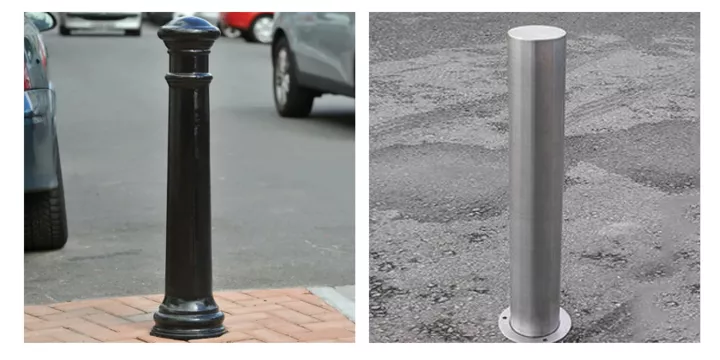
▲ The minimalist pillar on the right has been criticized for its lack of detail
The widespread popularity of minimalism for its 'absolute neutrality, lack of detail, and lack of identity' and its consequent vilification not only illustrates the 'repressive' nature of mainstream aesthetic interests, but also suggests that it does have a psychological function in meeting contemporary needs.
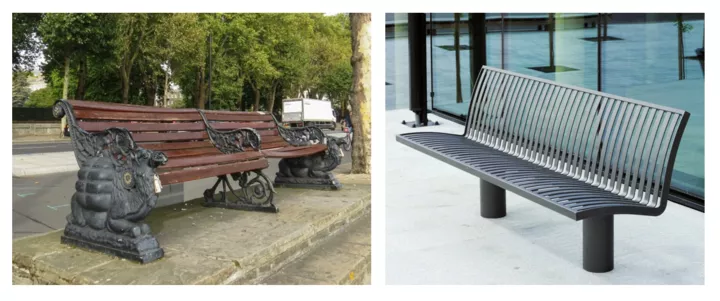
▲ Floating bench vs. minimalist bench, doesn't the right one look better?
In fact, the best way to make 'minimalism' less ubiquitous to the point of disgust is to learn less from Netflix and avoid blind obedience.
Popularity is "mandatory"
Don't rush to criticize minimalism for making everything look the same just yet. Because the point isn't minimalism, it's that it's popular.
Once a style becomes popular, everything in the world will look pretty much the same.
In the years when Impressionism was popular, France was at war with Prussia. The most famous work, Sunrise - Impression (1872), depicts the port of Le Havre in northern France, where the painter Monet spent his childhood.
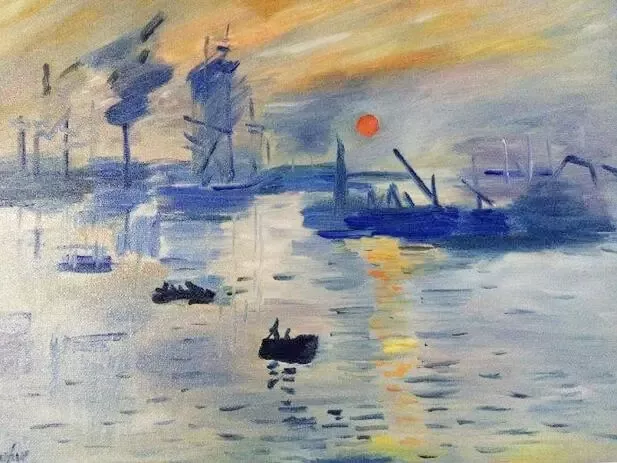
In the scene, an orange sunrise rises lazily from the sea, just like you and I rising from our blankets on a back-to-south day in the Lingnan. The sun's glow is so faint that it takes great effort not to dispel the grey-blue haze that envelops the small ship and the small sculling boat, while leaving a yellow reflection on the sea. Beyond that, there were no details to ponder.
Impressionist paintings looked like coloured gas and flows of light. Before that, it was popular to have highly 'perfect' classical art, made up of layers and layers of detailed brushwork, like Donatello's sculptures of saints, where a single finger pulls which bundle of muscles in the small arm is rendered as it is, compared to the Impressionists' work, which is similar to someone's sketches.
Impressionism was popular in its own right. With the German nation-state replacing France as the dominant force on the continent, the end of the emperor's rule in France, the beginning of republican politics, and the uprising of the Paris Commune - an 'egalitarian' modern age was emerging.
Monet or Manet, Van Gogh, Renoir or Cézanne, the buildings, rivers and skies are transformed into blurred landscapes that lack subtlety and clarity but inspire the viewer's rich imagination. The scope for imagination is so great because people are experiencing a downward shift of power, something never seen before in history.
By the time the Bauhaus became popular, the world was full of buildings that were horizontal and vertical.

▲ 100 Years of Bauhaus, Top 10 Greatest Works, How Many Can You Recognize?
After World War I, Germany struggled to meet its obligations under the Treaty of Versailles, with high reparations and a divided country. Proclaiming 'art and technology, a new unity', the Bauhaus ushered in a fascinating simplicity that proved to the world that Germany was less aggressive - but a progressive, bold, open, pioneering, rational and sophisticated republic.
Of course, the artists were particularly stingy with their materials, presumably because raw materials were so tight in Germany at the time.
Today, in Berlin, Moscow, New York and Beijing, the Bauhaus-style buildings still have an admirable glory. People book the doors of the museum's 'Impressionist' exhibitions, even if they queue for hours.
A popular style can become an overwhelming 'mainstream' trend for a certain period of time; when it's no longer popular, it still gets a following. The only time it might get annoying is when it's popular for a while and
Minimalism is back
Minimalism was first popularized in the 1960s. Minimalist artists sought to see things as they were, and particularly hated the idea of carving marble into human figures and the like, where stone was still stone and wood was still wood, and could not be any other 'object'.
Art, in a way, always has to do with making some logic out of some phenomenon. Even anarcho-nihilism like Dadaism has its purpose - to remove decadence from the world and establish a new order.
Minimalism is merely a continuation of this order 'purified', while the artist's creation is more compartmentalized, with plans made, orders given, and production supervised, which doesn't sound romantic at all.
Like Donald Judd, most of the works are titled Untitled, and besides not revealing any emotion in the work, the artist is even worried that the names of the works might distract people. Red copper boxes, a dozen unsupported shelves ...... Judd is shaking up some inner truth with repetitiveness.
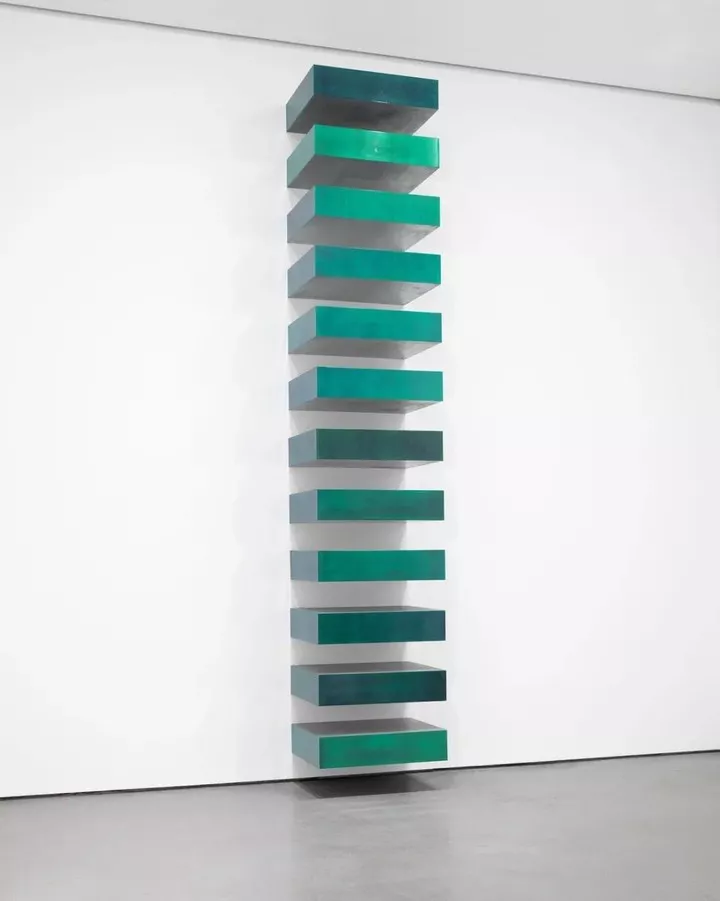
▲ "Untitled", Donald Judd, 1967
Frank Stella, almost ten years younger than Judd. In The Marriage of Reason and Vulgarity 2 (1959), one can only see black and white lines, of varying thickness, twisting around each other.

▲ BILIKA I, Frank Stella, 1973
Carl Andre's Equivocation 8 (1966), is 120 refractory bricks arranged in two rectangular layers. He didn't want the viewer to think the work had any deep meaning - it's 120 refractory bricks!
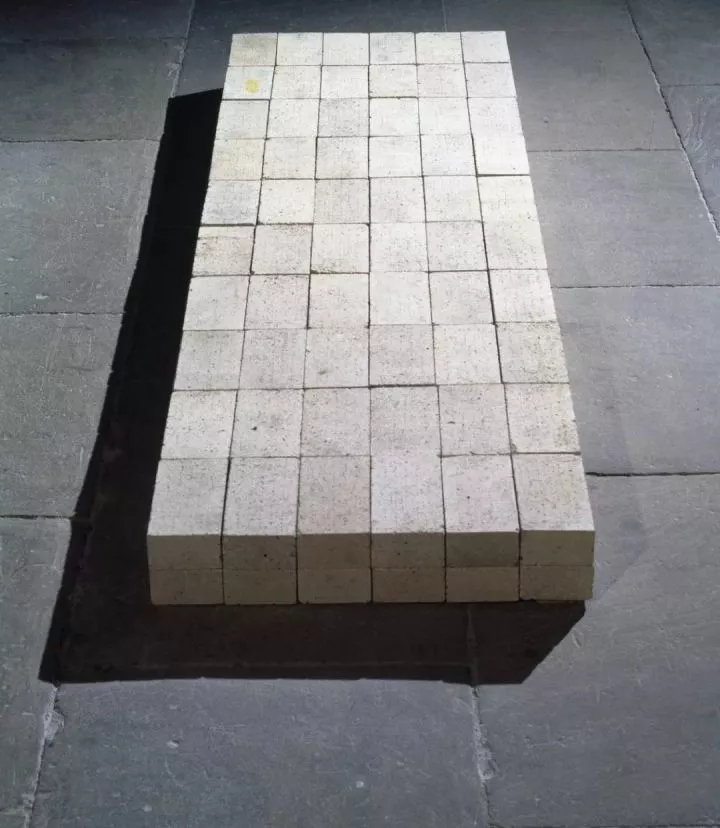
▲ Karl André's Equivalents 8, 1966
Sol LeWitt's Sequence Project 1 (1966), shows a white cube of trees in a grid. The author states that the best way to view the work is to pace slowly around the sculpture, looking at it from different angles and with different ways of thinking. As long as the viewer's eye adjusts to the atmosphere, the information gained can continue to grow.
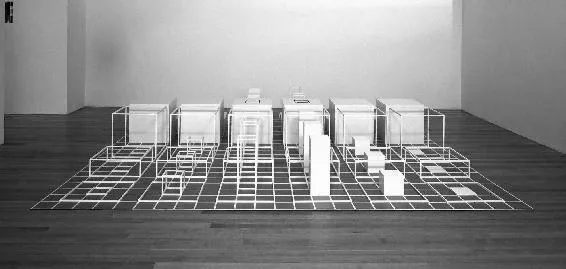
▲ Saul LeWitt, Sequential Engineering 1, 1966
These masterpieces of minimalism, also called 'space age art', are precise, relentless and dispassionate. Minimal artists explore the same principles of matter, systems, volume, and order as the scientists who sent humans into space.
The 1960s and 1970s, with the hippie movement, the May Storm and the oil crisis, all created a desire to find some sort of order.
Minimalism was also popular in the design world at the time, and a series of home furnishings from Braun in Germany not only won many awards at the time, but also inspired Apple in the future, bringing minimalism back to life in the 21st century.
Working on demand
The minimalist style, led by Apple, has been popular for a little over two decades, and has been growing in popularity for the last decade, though opposition has also grown.
Minimalism is growing because there is a real anxiety about too much identity. This anxiety is particularly evident in the 21st century. The popularity of the Internet has filled the world with stories of overnight fame, and even the most ordinary people have hopes of becoming stars.
And with the number of people who desire to be noticed and admired far outweighing the number of people who achieve that desire, minimalism has emerged as no less than the best soother, because its philosophy is 'focused on reducing consumption and excess in life so that individuals can focus on prioritizing their own values'. In a sense, consumer minimalism is a 'return to self'.
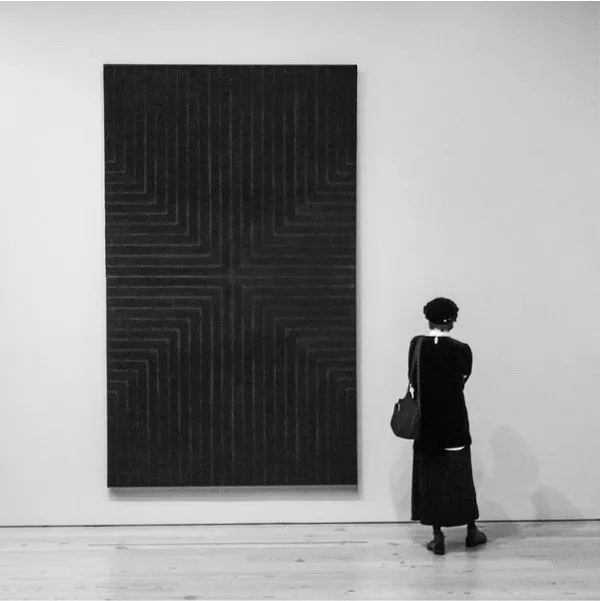
▲ Frank Stella's "Die Fahne Hoch!", 1959, a monochrome work that is one of the most famous works challenging the Abstract Expressionist movement
At the same time, minimalism has the illusory effect of 'pulling together' spending power. a 2012 psychological study found that voluntary simplicity was associated with increased life satisfaction among low-income participants, but not among high-income participants.
To put it bluntly, people without money can hide the fact that they can't afford luxury goods or convince themselves that they "don't need" those things through minimalism or "cutting out"; but rich people never engage in minimalism and buy more "useless" things without worrying about the lack of space at home.
Also, political correctness is an important factor. Too much detail on items highlights race, gender, status, class, occupation, and other identities, and if everyone is minimalist and neutral, it looks more worldly.
People today need minimalism in order for minimalism to remain popular. But I'm afraid the choice is also in people's hands as to whether minimalism should be a dominant force.

Home design, for example, has been popular for several years now with the minimalist style. Often it's a concrete self leveling floor, then put some iron framed furniture and black and white grey throughout the house. Or small white tiles on the walls and black rock slab sinks, the home is chosen.
The credo of minimalism is function over form. But when it went viral, it became form over function.
Small white tiles on the kitchen wall, wipe the fumes will be exhausted, and the smaller the tile seam, the more cleaning work is not easy to do. Black easy to show water stains oil stains, rock slab basin with a long time to fall off the bottom. As for whether the concrete floor, iron shelves are good or not, it varies from person to person, but the home is engaged in playing screw industrial style, should not be suitable for most people.
Going with a certain style because it's popular naturally spawns too many cookie-cutter items. Minimalism may not be so universal if you start with your own preferences and needs.
In fact, as a general rule, minimalist items are really better than items with too much detailing, and not every designer has a good grasp of the scale of detail. Lots of useless details, much like the old saying "Fu Erlang is the brother of Da Lang, the brother of San Lang, and the son of Lao Lang. The temple has a tree. People say that the tree is in front of the temple, but Yu only says that the temple is behind the tree ......"